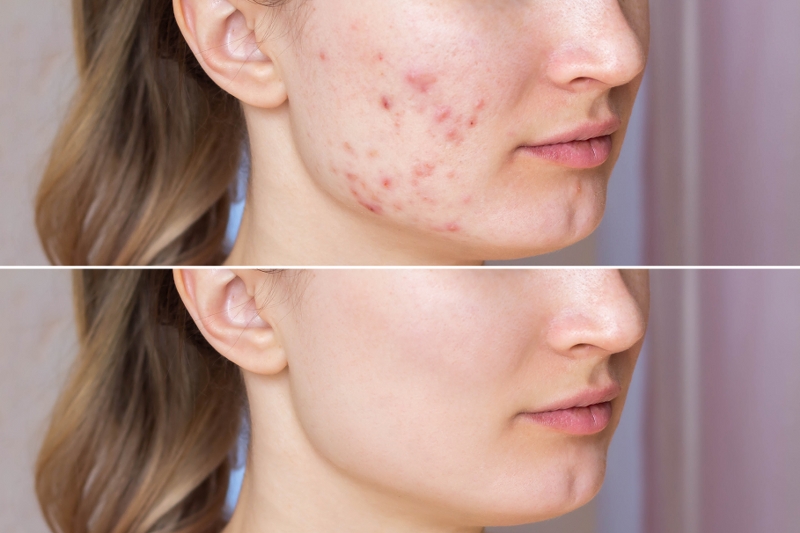 Acne is the most common chronic skin disease of adolescence, characterized by painful, reddish, hard lesions on the face, shoulders, back, and chest. Acne and pimples are terms that refer to the same condition. Acne develops due to increased activity in the skin's oil glands influenced by hormones, blockage of the ducts, bacterial proliferation, and the ensuing inflammation in the area. Acne is a significant disease that affects both the physical and psychological aspects of an individual during adolescence, a critical period for psychosocial development. While acne may naturally resolve after adolescence, it can leave permanent scars and recur. Permanent scars on the face can pose a significant cosmetic concern, making early diagnosis and treatment of acne crucial.
Acne is the most common chronic skin disease of adolescence, characterized by painful, reddish, hard lesions on the face, shoulders, back, and chest. Acne and pimples are terms that refer to the same condition. Acne develops due to increased activity in the skin's oil glands influenced by hormones, blockage of the ducts, bacterial proliferation, and the ensuing inflammation in the area. Acne is a significant disease that affects both the physical and psychological aspects of an individual during adolescence, a critical period for psychosocial development. While acne may naturally resolve after adolescence, it can leave permanent scars and recur. Permanent scars on the face can pose a significant cosmetic concern, making early diagnosis and treatment of acne crucial.
Acne (pimple) treatment is conducted by dermatologists. Given its chronic nature, treatment typically lasts an average of 4-6 months. In addition to medical treatment, moisturizers and cleansers are used. Topical (cream) treatments include retinoids, antibiotics, benzoyl peroxide, and azelaic acid. Systemic treatments may involve antibiotics, systemic retinoids, and hormonal therapies. Treatment is individualized; every acne patient is evaluated uniquely, and the most appropriate treatment is prescribed. The treatment is determined considering various factors such as the severity of the patient's acne, type, and any prior treatments used.
Acne scars are permanent pitted marks typically seen on the face due to acne. Treatments are available for these scars, including laser therapy, PRP, mesotherapy, dermapen, and chemical peeling. Acne scar treatment is individualized; after evaluation in our clinic, the most suitable treatment is planned. Depending on the planned treatment, the duration can vary, usually averaging between 3-6 months. It should be noted that complete correction of permanent scars may not always be possible.